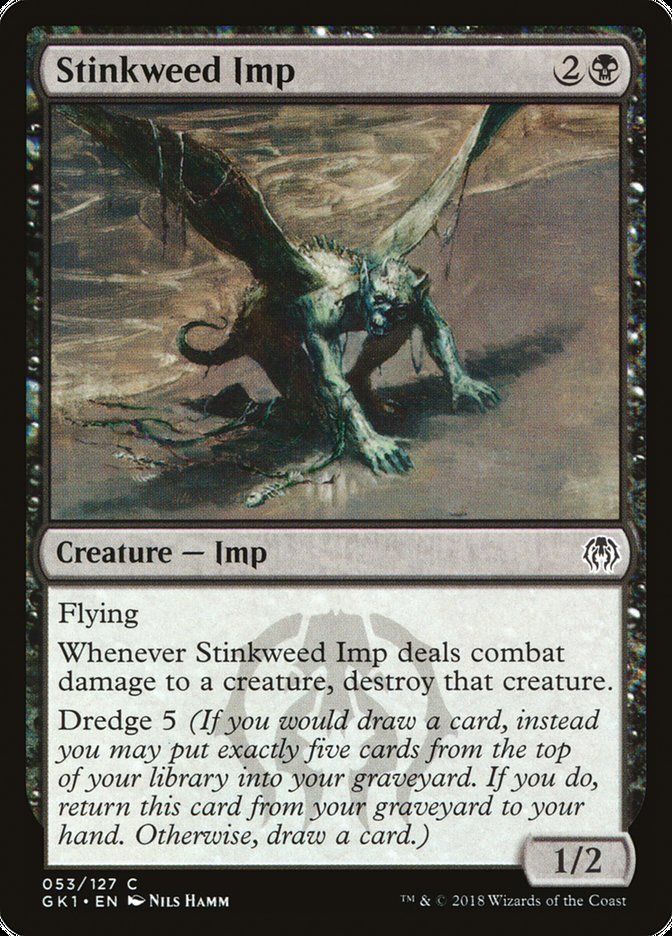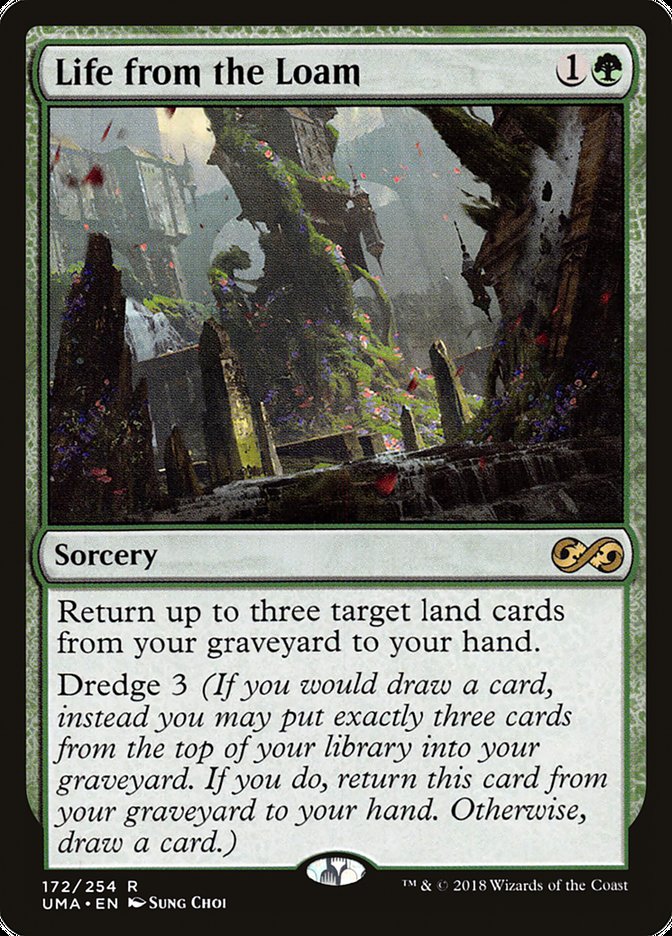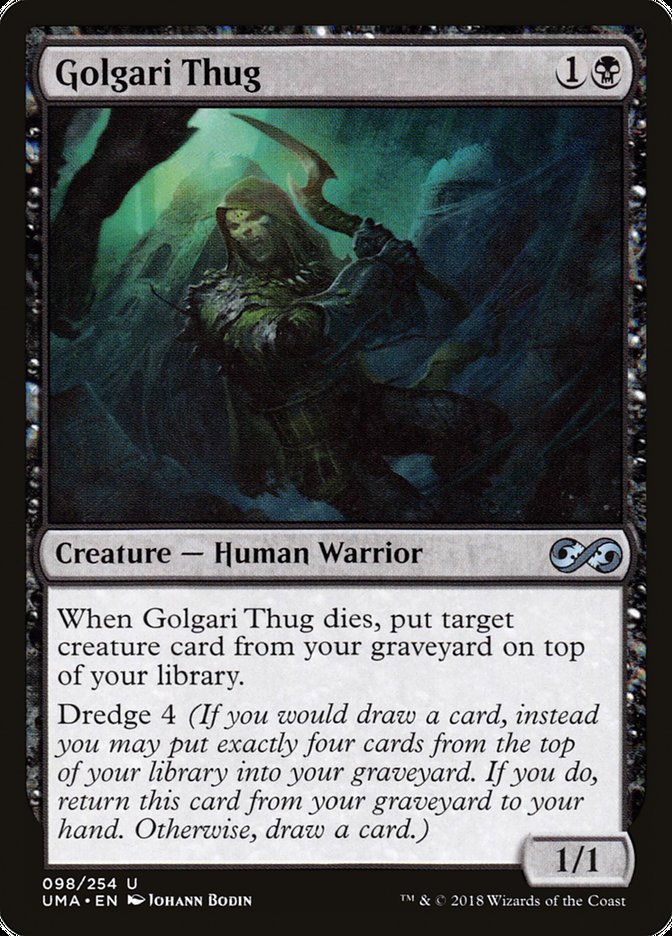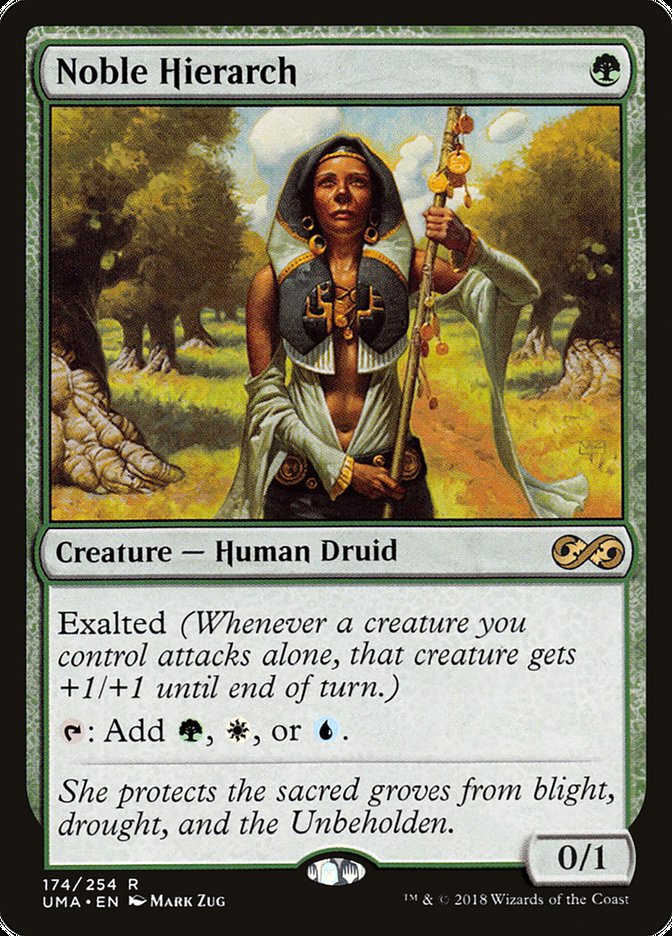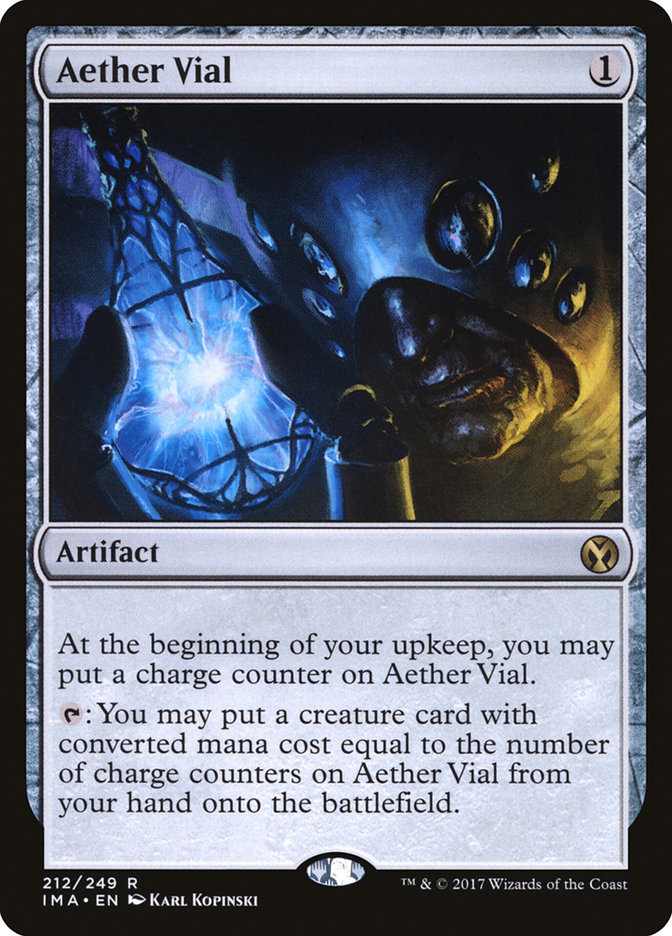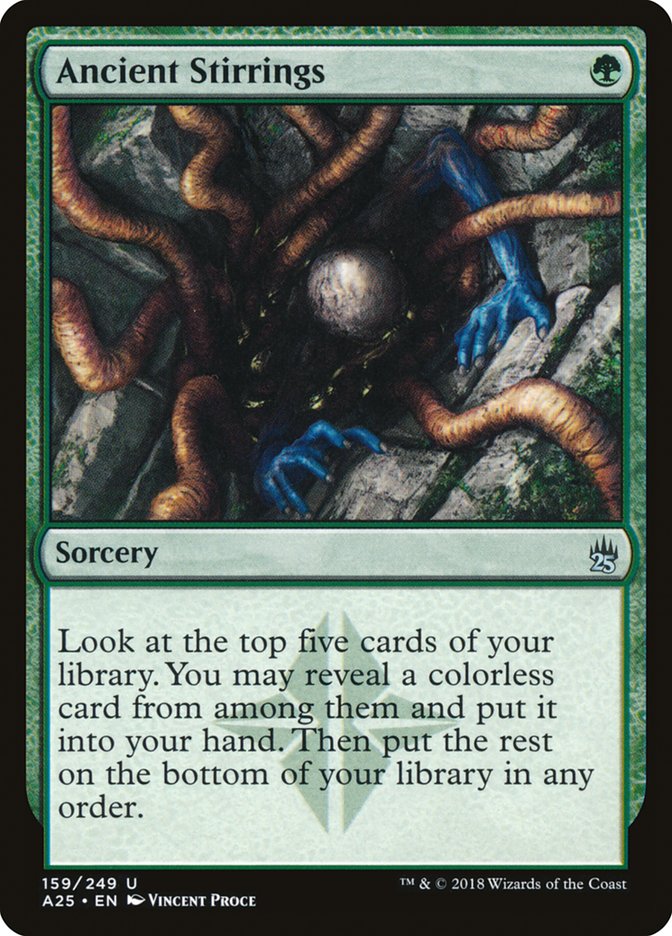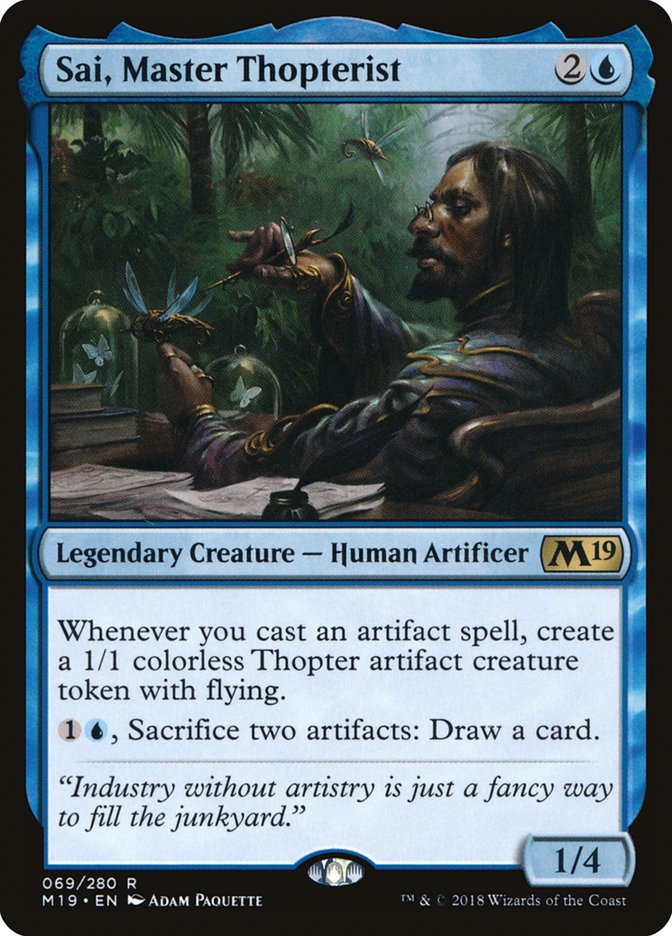Thanksgiving is over and hopefully we’ve all recovered from our
gluttony-induced comas, because there’s an exciting couple weeks of Magic
remaining before the typical lull at the end of the year. The SCG Tour
stops in Baltimore this weekend for an individual Modern Open before
finishing up with SCG Con Winter featuring the Season Two Invitational next
weekend.
With two weeks to prepare for two formats and Modern being relevant this
weekend, it makes sense to me to focus on that format right now and switch
my focus to Standard next week (by which I of course mean plead in vain
with Brad Nelson to teach me how to Standard).
In the spirit of the holiday season, you may think I’m here today to tell
you about how diverse Modern is and that you can play anything you want as
long as you believe. But honestly, that’s the myth about how the holidays
work. I’ve been inspired by the harsh reality of the season, which is
typified by arguing with your extended family until it’s time to line up in
the snow for three hours to save a hundred bucks on a TV so you can ignore
them next year and avoid the same horrible fate.
The truth about Modern is much less rosy. In Standard, the difference
between the top tier decks and the rest of the metagame is quite large,
which makes the best decks stand out more, but that gap is narrowed in
Modern, which has the adverse effect of leading players into playing subpar
decks because certain archetypes are well-positioned or under the radar or
whatever other flimsy excuse we use to rationalize the decision.
So here are some things you should know about Modern, even if you don’t
want to know them:
Dredge Is Just Another Good Deck
I love Dredge. It won the most recent Team Constructed Open, and I would
love nothing more than to lock it in, forget about Modern and focus my
efforts on Standard. It’s definitely of a power level that is on par with
the best decks in the format, killing consistently on turn 4 when
undisrupted, and can play through hate.
But none of that separates Dredge from the rest of the format. It merely
elevates it to the point where it can compete. There are several other
decks that meet that criterion, but with Dredge you make some significant
sacrifices to get there.
First, the deck is very linear. That makes it more vulnerable to graveyard
hate than something like Ironworks or Hollow One, and despite the fact that
Dredge quickly receded in popularity after a dominant weekend in Dallas
last month, the level of graveyard hate hasn’t dipped much since the
reaction to its return.
I look through Modern decklists every week trying to find another weekend
where Dredge can catch the metagame unprepared and it’s just not happening.
Players hate losing to Dredge and there are so many other graveyard decks
in Modern that using a few extra sideboard slots on graveyard hate is more
than reasonable. And while Dredge can win through its share of hate cards,
I’m not interested in having to slog through them every single round.
Creeping Chill Dredge already has more variance because the land and
dredger counts were shaved to make room for the new card, so you often have
to keep functional hands that lose to hate and hope thing work out.
Most linear decks look to sideboard away from their vulnerability to hate,
but Dredge is not at all malleable. By that I mean there are so many slots
devoted to the engine in order to reach the needed level of consistency
that you can’t make significant changes in sideboarding. Dredge is a
stubborn coach who uses the same plays for thirty years because that’s how
the game should be played. There’s a certain respect to be earned from that
level of stubbornness, but it’s ultimately not advisable.
When Dredge re-emerged last month, the metagame had lots of control and
Burn was on the rise, but a decline in those decks and an uptick in
graveyard hate has shown that it’s not the ban worthy deck it was two years
ago, but merely another fine deck that players are willing to put the
effort into beating right now. I’d rather not settle for fine.
Azorius Control is No Longer a Good Deck
If there’s one trend that has defined Modern in 2018, it’s the return of
control decks as viable archetypes in Modern. Since the banning of Splinter
Twin, control mages had been left rudderless, and early returns on the
unbanning of Jace, the Mind Sculptor is that the most powerful planeswalker
of all time wasn’t enough to put them on the map. But when combined with
Teferi, Hero of Dominaria, control had enough powerful card draw engines
that could serve another purpose when needed to compete in the complex
landscape of Modern. It was so popular that I was playing Blue Moon in
large part to capitalize on its great matchup in control mirrors.
The fact that control has been actively good for most of the year hasn’t
stopped people from complaining on Twitter about the format and clamoring
for a Splinter Twin unban, but that’s a rant for another day. The point is
that control decks can’t be summarily dismissed anymore.
That said, now is not a good time for them. The format has been pushed in a
linear direction to combat Dredge, which is a bad matchup itself, and the
control decks are built around having good removal and powerful
planeswalkers, so they are suited to beating aggro and midrange decks and
generally don’t match up well with a lot of different combo and big mana
decks, which should be on the rise.
And even those good matchups have taken a hit. Assassin’s Trophy may have
been massively overhyped, but it helps Jund and Golgari decks answer
planeswalkers or Search for Azcanta, which are critical to keep on the
battlefield in attrition games, and some number of Humans players have
migrated over to Bant Spirits, which is a more difficult matchup because
they get to play at instant speed, have lots of ways to profitably interact
with removal spells, and the power of Collected Company to recover from a
sweeper.
I agree with what Ari Lax
wrote yesterday
, that Azorius Control is rarely horrible, but made bad when facing a lot
of 45% matchups, and that’s where I see it right now. Control decks thrive
when the metagame is fairer, and that’s not where we are.
Bant Spirits Has Surpassed Humans
These two have been roughly equal in metagame share for a while now, and
they operate very similarly as aggressive decks with heavy disruption that
are key off of Noble Hierarch and Aether Vial generating an early mana
advantage.
For a while I thought that Humans was better positioned against combo decks
because it’s a little faster and its disruption is more proactive in those
matchups, while Bant Spirits is better in fair matchups because it protects
its threats from removal and has Collected Company in longer games. With
the format turning linear that would point to Humans being the better of
the two, but I’m now of the impression that Bant Spirits is just the better
deck.
Bant Spirits still gets to play a lot of good disruptive elements against
linear decks with Mausoleum Wanderer and Spell Queller so even if the
dichotomy of Humans being better against linear decks and Bant Spirits
being better against fair decks holds, on the whole Bant Spirits looks much
better off. Thus, the metagame would have to skew heavily towards linear
decks to make Humans a better choice on this metric, and too many players
would rather play a fair deck even if it’s not as well-positioned.
There’s also the question of the match between the two decks, where I think
Bant Spirits has the edge because of its volume of lords and the power of
flying giving them the ability to dictate the pace of the game. If the Bant
Spirits player wants to race, there’s not much the Humans player can do to
stop it because they don’t have enough flying blockers to do so. There are
going to be games where the Humans player comes out faster and dicatates
from a position of strength, but the default is for the Bant Spirits player
to be in the driver’s seat, which is a significant advantage.
The density of fliers in Bant Spirits also makes it harder for other decks
to play defense with creatures. A single Tarmogoyf or Hollow One can hold
back a lot of Humans (cough…Meddling Mage…) but not a single Spirit. The
value of flying can be lost in a format with plenty of creature-light
decks, but it’s still one of the best keyword abilities, especially when
it’s on most of your creatures.
Continuing, the ability to play mostly at instant speed makes Bant Spirits
much more difficult to play against. Sorcery speed removal and sweepers are
much worse because they can recover immediately, and playing the guessing
game against Spell Queller and Collected Company means that over time
you’ll either hold back in a spot where you could’ve been aggressive, or
get caught playing into them for a massive tempo swing. There’s only so
much you can do to suss out what’s in their hand and play around it, which
makes Bant Spirits a lot scarier.
And lastly, Bant Spirits gets to play a real sideboard, with spells. The
nature of the Humans manabase means it can only afford to play non-creature
spells if they don’t require colored mana, like Grafdigger’s Cage and
Dismember. That cuts out a ton of the best sideboard cards in Modern, like
Rest in Peace, as well as powerful spells, like Negate and Path to Exile.
Just the option to play these cards is valuable since some of your
opponents will play around them.
Humans gets a surprising amount out of its sideboard given the extreme
restrictions placed on it, but it’s still a significant cost to pay for
playing the deck, and one that’s no longer tenable now that Bant Spirits is
around. “Keep your options open” is one of the oldest mantras in Magic, and
we’re seeing one of the finest examples of it play out in real time. If you
want to play creatures, go for the spooky ones.
Faithless Looting, Ancient Stirrings, and Noble Hierarch are Better than
Everything Else
Dylan Hand
noted on Monday
that these three cards form the top tier of the metagame (he used Aether
Vial instead of Noble Hierarch as the representative for disruptive aggro
decks, but the message is the same), writing:
Modern’s top tier consists of strategies containing these three cards.
If you’re not playing a deck containing one of these cards, you best be
playing a strategy that’s at least close to as linear, powerful, and
resilient as the decks that utilize them, because “close” is as good as
it’ll get.
I’ll go one step further than Dylan and say you better be registering four
of one of these cards. There’s no reason to settle for “close enough”
unless you care more about playing the deck you enjoy than maximizing your
chance of winning the tournament. I’ll entertain Storm as a viable
alternative, but that’s probably a worse version of Ironworks unless you’re
already familiar with it (aka your name is Caleb Scherer or Paul Muller).
My choice for best Noble Hierarch deck is obvious from the previous
section, and as far as Faithless Looting goes, I’m high on Arclight
Phoenix, but I’m still not sure on which shell. If you’re interested in
Izzet Phoenix you can check out
my article from last week
while Gerry Thompson
shared some of his wisdom on Mono-Red and Mardu lists
. These decks have been competitive for weeks now and still have room to
improve, which makes them more exciting than the established Faithless
Looting decks. I also like that they aren’t as dependent on their
graveyard, making it easier to sidestep the hate that exists to check
Dredge.
As for Ancient Stirrings aficionados, you get to register the most
criminally underplayed deck in Modern:
Creatures (5)
Lands (18)
Spells (37)
- 4 Krark-Clan Ironworks
- 2 Pyrite Spellbomb
- 3 Chromatic Sphere
- 4 Mind Stone
- 3 Engineered Explosives
- 4 Terrarion
- 4 Chromatic Star
- 4 Ancient Stirrings
- 4 Mox Opal
- 1 Spine of Ish Sah
- 4 Ichor Wellspring
Sideboard

Ironworks is complicated and tedious to play, especially if you’re trying
to practice on Magic Online, but as a combo deck it has the best
combination of speed, consistency, and resiliency in the format. Matt Nass
dominated every tournament he played with the deck earlier this year,
forcing everyone else to adapt, and we did.
Graveyard hate was a real threat to disrupt the combo that was tricky to
play around, and Leyline of the Void and Rest in Peace specifically stopped
Chromatic Star, Terrarion, and half of Ichor Wellspring from drawing cards,
limiting the deck’s velocity. Stony Silence was a nightmare that had to be
answered with Nature’s Claim. Surgical Extraction also shot up in play and
ended the game if timed well.
Cards like Ghirapur Aether Grid and Wurmcoil Engine could do some damage in
the face of sideboard hate, but the deck was generally held in check.
However, the addition of Sai, Master Thopterist has sent Ironworks to
another level. It can take over the game in a few turns if left unchecked,
buy time against aggressive decks, or generate card advantage against
midrange and control decks. It’s versatile enough to sneak into the
maindeck of some lists, and I’m not sure that we’ve properly adjusted to
its presence because so many players are turned off by the deck’s
complexity.
Honestly, Mox Opal is powerful enough to add a fourth card to the list of
required cards, I just don’t like the other decks that play it. But no deck
plays a better duo of cards than Ironworks does in Ancient Stirrings and
Mox Opal. They are the Jordan and Pippen of Modern. The Shaq and Kobe. The
Stockton and Malone. The Joe and Ingles.
I know Modern has a lot of decks and each one has its fan base; I’m a vocal
part of some of those fan bases, but I don’t see a compelling reason to
play something other than these decks. Anything else and you’re needlessly
handicapping yourself.


